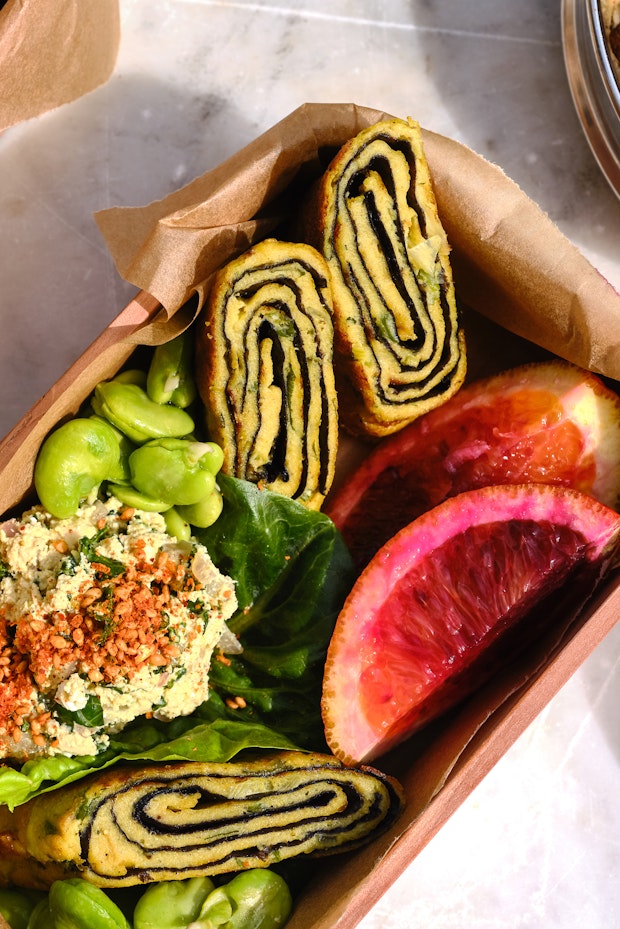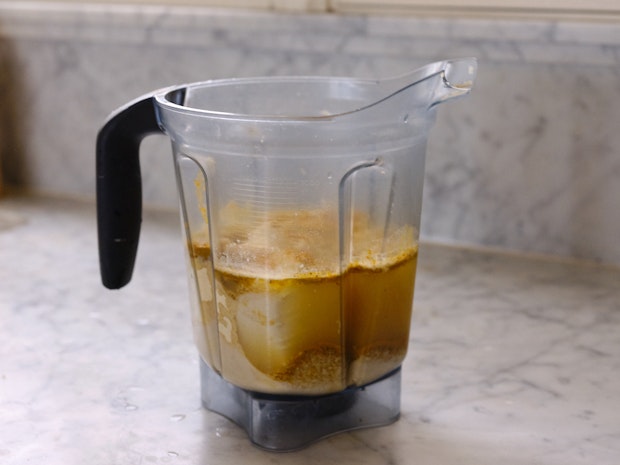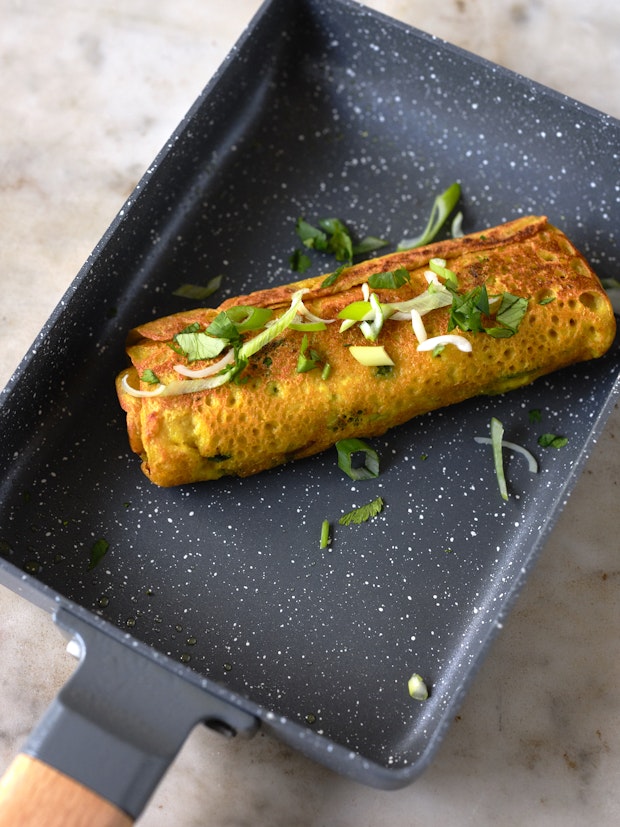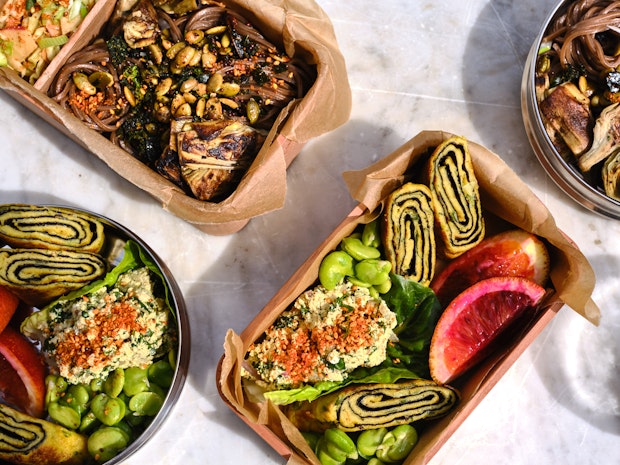Vegan Tamagoyaki – dailyrecipeshare
Tamagoyaki are Japanese rolled omelettes, a favorite bento component and, around here, a lunchtime heavy lifter. Sometimes I like to make them the classic way, using beaten eggs. I also, often, make a vegan version using a blended chickpea and tofu mixture. I’ve been working on a post about feel-good lunch ideas (coming soon) and the vegan tamagoyaki are a cornerstone component. You can season these tamagoyaki endless ways, make them ahead of time, and enjoy tamagoyaki on the go. The perfect protein-rich player.
Vegan Tamagoyaki: Inspiration
There used to be a vegan frittata I loved at Go Get Em Tiger in Los Feliz, Los Angeles made from a rich batter of chickpea flour and a lot of olive oil – I don’t see it on the current menu. It was streaked with kale and dotted with cherry tomatoes, shallots were involved, and the “egg” component was fluffy and fantastic. There’s a lot of olive oil in that vegan frittata, more than I like to use in an everyday-type recipe, so I go with a chickpea flour base blended with silken tofu and less oil. It works out great, cooks up (and browns) beautifully, and is a great plant-based alternative to classic tamagoyaki. This recipe makes other big leaps from traditional tamagoyaki recipes which tend to be sweetened with mirin or sugar, and seasoned with dashi and soy sauce. That said, once you finesse your technique, you can play with all the seasoning variables and make yours as classic or experimental as you like. 
The chickpea, tofu, and seasoning mixture is simple to make by using a blender (or hand blender). It will keep refrigerated for days, which is great for on-the-fly rolls.
Choosing a Tamagoyaki Pan
You have a number of options when it comes to pans here. I have a simple, rectangular, classic, small cast iron tamagoyaki pan that makes wonderful egg-based tamagoyaki (not pictured). It really doesn’t do as well with vegan tamagoyaki. The batter sears and sticks and honestly, its a big mess. So, I have a ceramic pan that I use for these, and it’s great. It’s super slippery, responsive, and generally easy to use. The front edge is sloped for easier rolling. It’s this one – highly recommend.
Can I make Tamagoyaki Without the Special Pan?
Yes, and no. It’s exceptionally difficult to establish the classic rectangular shape without using a pan with four corners. But, if you have a small, round skillet there’s no reason not to go for a round version. Simply pour enough of your tamagoyaki mixture into the middle of the pan, and quickly swirl until you have thin coverage across the flat bottom of the pan – avoiding the sides. And proceed from there. Keep in mind this mixture loves a slippery surface, and it’s one of the few occasions I break out a non-stick pan.
Make-ahead Considerations
Tamagoyaki are great because you can do multiple levels of “make-ahead.” The vegan tamagoyaki mixture fits in a quart-sized jar and will keep refrigerated for 5-6 days. Then, when you have a window of time, you can cook all (or some) of your tamagoyaki and once. Allow them to cool, wrap individually, for example, tightly in parchment paper – they will keep refrigerated for 3-4 days. When you’re ready to pack a lunch or make a meal, slice and enjoy.
Variations
Nori-lined Tamagoyaki: Trim sheets of nori so they’re just a bit smaller than the base of your pan. Immediately after coating the pan with the tamagoyaki mixture, place a sheet of nori on top of the wet mixture. It will shrink up a bit and sometimes starts curling at the edges a bit. Proceed with rolling per the recipe. If you’re doing a double thick tamagoyaki, through down a second sheet of nori after your second allocation of tamagoyaki mixture has spread across the pan. Once it has set, roll and proceed with the recipe.
Caramellized Onion Tamagoyaki: If you have any jammy, deeply caramelized onions on hand – this is a great way to use them. Drop some of the onions onto still-wet tamagoyaki mixture just after it hits the pan. It works really well with this chickpea-tofu combination.
Water vs. broth: This recipe call for 1 3/4 cups of water, but you can absolutely play around with other liquids. I’ve made this tamagoyaki using strong mushroom tea in place of the water, or a favorite herby vegetable broth. Play around!
Here’s another example of vegan tamagoyaki as a component in a simple rice bowl for lunch. There’s purple rice, sliced avocado, chana masala spice-dusted hard-boiled egg, and peanuts. I drizzled it with a spicy sesame soy sauce. All the components here were pre-made (aka leftovers). To pull together lunch I heated the rice, and pulled the other components from the refrigerator an hour or so ahead of time to bring them up to room temperature. Have fun experimenting, and enjoy!
Source
